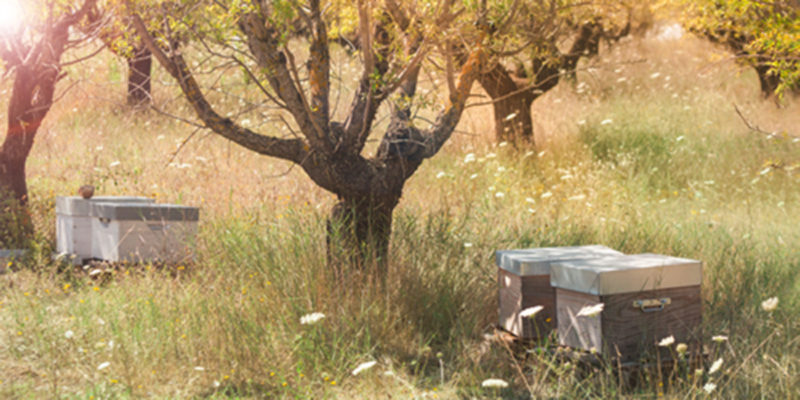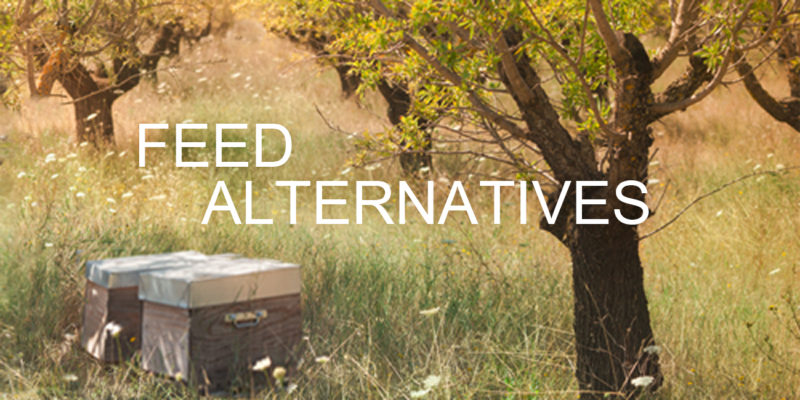Bee food feeding alternatives
Pollen
Bees need different flowering plantsto ensure a great natural pollen diversity, since not every type of pollen contains all of the necessary nutrients. Pollen from a single source may lead to a negative impact on the population’s immunity and vitality. When pollen shortage and varroa infestation are both present, it inevitably causes the death of the affected bee colony. A plentiful pollen supply in the spring is important to help the population grow after its winter hibernation; in the summer, it is essential for building up the winter bees’ fat- and protein-bodiesn order to help them live longer.
A bee population requires between 30 – 50 kg of pollen per year. The effects of a pollen shortage can be seen from the shrinking populations during the honey yield season. A good pollen supply in late summer is essential for developing a well-fed, healthy winter population. Pollen substitutes (e.g. soy pollen, skim milk powder) are never a good alternative to freshly harvested natural flower pollen. The bees’ physiognomy is not adapted to use pollen substitutes. A clearly positive effect of pollen substitutes has not been scientifically proven.
Water
In addition to their individual needs, bees need water to prepare their jelly, to feed the brood, to dissolve solid food and to lower the hive temperature on hot summer days. Bees do not store water, so it is important to keep a reliable source of water nearby, especially in the early spring when bees often cannot leave the hive for more than an hour a day. The water source should not be too close to the hive entrance, either. Bees prefer water with a slightly acidic pH value between 5 and 6. Bees will also be happy with a bucket filled with water, peat or even bark mulch, placed in a sunny spot.
Honey
As a natural source of nutrition, there is no substitute for honey. From April to June, a population needs around 300 – 500 g of honey a day. However, some unifloral honeys are unsuitable as a winter food.
Forest and heather honey are too high in minerals, which can create intestinal problems such as dysentery. They cannot be fed honey from other hives, since one can never be sure that this honey is free from germs. Food that has been taken out of the hive should never be used for later feeding in order to prevent disease. This especially applies to feed honeycombs from dead populations – these should be discarded!
Honey substitutes
For many years, sugar water was the traditional way to feed bees. The benefit of being easy to make is counteracted by its very limited shelf life, due to the risk of spoilage from microorganisms (e.g. molds). If a slimy film appears on the sugar water, it can no longer be used for feeding.
Compared to sugar water, it is much less work for bees to process thicker solutions like ambrosia® bee feed syrup because the inversion takes much less glandular effort. Alternatively, beekeepers also prepare a fondant using powdered sugar and honey, but this is very labor-intensive and expensive.
Ambrosia
In the 1970s, in collaboration with beekeepers and scientists, Nordzucker developed special ready-to-use syrup and fondant products based on the ideal sugar spectrum of honey for bees and using the purest beet sugar. Since then, it has been sold throughout Europe under the name ambrosia®. The use of refined sugar in certified production processes ensures high-quality products. ambrosia® does not contain any contaminants.
We gladly answer your questions and recommend a specialized local retailer.


